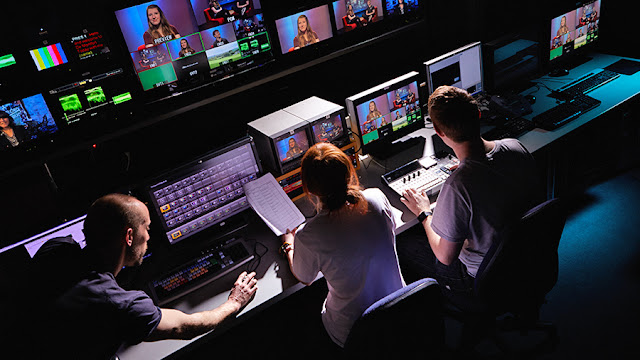Advanced Lighting Workshop
Advanced Lighting Workshop
In this post I will be writing down what we learnt during the advanced lighting workshop.
We learnt about the different lightings we might want to use for our music videos in class. The first thing we spoke about was the difference between a director and a director of photography. A director is the person who works on the set at all times and has the exact vision of how he/she wants it to look like. The director is the boss and he/she is the only person that can call the shots. Where as, the director of photography is the person who makes sure everything looks the way it is desired to be and if there were to be any mistakes in the scene the DOP would have to ask for permission from the director to retake that shot again. We learnt about this first in the class because the director of photography will be the person managing what lights are going to be used and where they are going to be placed on the shooting day.
A rule before turning on film lights is to say "eyes down" or "sparking", to let people know around you, just in case if they are looking directly at it or changing a bulb for safety reasons. A smart way of thinking whilst lighting on a subject, is treating it as if it were a painting, and going in stages until the perfect shot is there to then be filmed.
There are several different lightings that we learnt about and I will be explaining each one below:
1. House Light
The house lights are the main lights controlled by a light switch in whichever room you are in. There is a name for it because when experimenting with film lighting you need the room to be completely dark for that specific lighting to do its magic. A main rule with this is before or after filming a scene the director will say "turn the house lights on".
2. Three Point Lighting
This type of lighting set is the most common. An example that would usually use this type of lighting is at interviews. There will be three different lights shining on the subject. The first is called the key light which is called the blond. The blonde light is one of the main film lights which is very bright. With this light you can also adjust the aperture to make it darker as it with this type of light it can usually be over exposed.
The next one is less powerful than the key light and it is called the red head. The read head will be on the opposite side of the blonde and what it does is lighten up the shadows that are on the subject or setting. The last set in the three point is the backlight which gives a nice look on any subject.
3. Beauty/Diva Lighting
The beauty lighting is normally used for the purpose of making the person beautiful in front of the camera. On the other hand, if you wanted the person to not look beautiful you would light them from the top or bottom. What usually tend to happen with lights is that it all comes out in a straight line, which produces deep shadows automatically. If we didn't want this effect, we could put a piece of trace in front of the light. The light will then hit the tracing paper and it will end by breaking out in different directions onto the subject matter which gives a nice final effect.
Another type of material you could use in front on a light is called a diffuser frame. This will make the shot moody so to lighten up certain parts of the subject that are dark, you could use a polisterin board.

4. Back Light
This type of light is placed behind a person or object to create a highlight that separates the subject from the background.
5. Fluorescent Light
This type of lighting is easy, cheap and very easy to set up. This light always ends up giving a pleasant effect on the subject or object. However, they have been used a lot, therefore, you would have to make it unique somehow.

6. Ring Light
This light is an assortment of LEDs that is diffused by a type of frosty glass in the front of it. There are controls on the back to manage the intensity of exposure. As these have been over used by youtubers usually, you could use a ring light for when someone opens a box for example.
7. Highlights
This type is thin beams of light to illuminate selected parts of the subject like her eyes for example. With this light, you want to use a higher shutter angle because all motion will then be super sharp and crisp.
You can adjust the amount of light coming into the lens by using the exposure whirl at the front of the camera. However, certain lenses work best when the exposure whirl is wide open and letting a lot of light in because it blurs out the background and focuses on the subject depending on what scene it is.
The TV monitor isn't useful at all because firstly the lighting/colours on the camera looks completely different to what comes up on the monitor. Another reason to why it isn't useful is that there is a huge amount of delay from what is happening in the real world to what you see on the monitor. Therefore, when we shoot our actual music videos we should only be using the TV monitor mainly for framing, and when the subject is lip syncing we should only keep eye contact with whoever is making motions in front of the camera.
Here is a summarised video I created to show what we learnt during the lesson:












Comments
Post a Comment